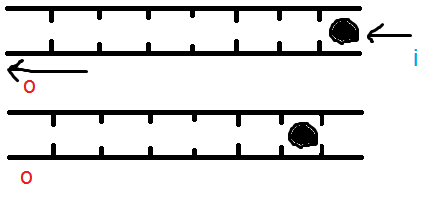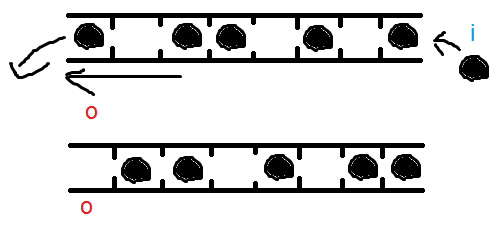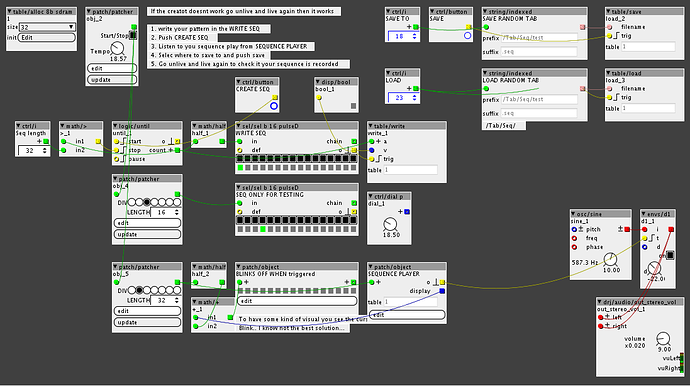You could hack the 32bit nature of variables. You can use shift registers for that, but you're limited to 32 bit long sequences.
I and sirsicksick have made a couple of objects, maybe you can try them
Imagine a long box with a certain number of sections (in the case of axoloti it's 32, but for this example i'll do 8) and two open ends.
something like this:

Also, you can read the leftmost bit as an output. In this case the register is completely empty, so you'll read 0 as output.
Now, say you want to input some data in the register: you can shift all bits to the left (but in this case nothing happens, since the box is already empty) and fill the rightmost bit with the input:

So, the register will become like this:

Now, if you shift again to the left (but with a 0-valued input):

You can see how it works, very basically.
Let's fast forward to a more interesting situation, with the box already "filled".

If you shift left, the leftmost bit is discarded, and the input is inserted on the right.
This configuration is named SISO (serial in, serial out), but there's also SIPO (serial in, parallel out) that allows you to "load" the register one bit at a time and read all the bits together.
PISO (parallel in serial out) allows you to input data in one shot, and output bits one at a time,
PIPO (parallel in parallel out) not sure what it's used for, but it exists too.
My object sptnk/logic/shift register can do all of these configurations.







